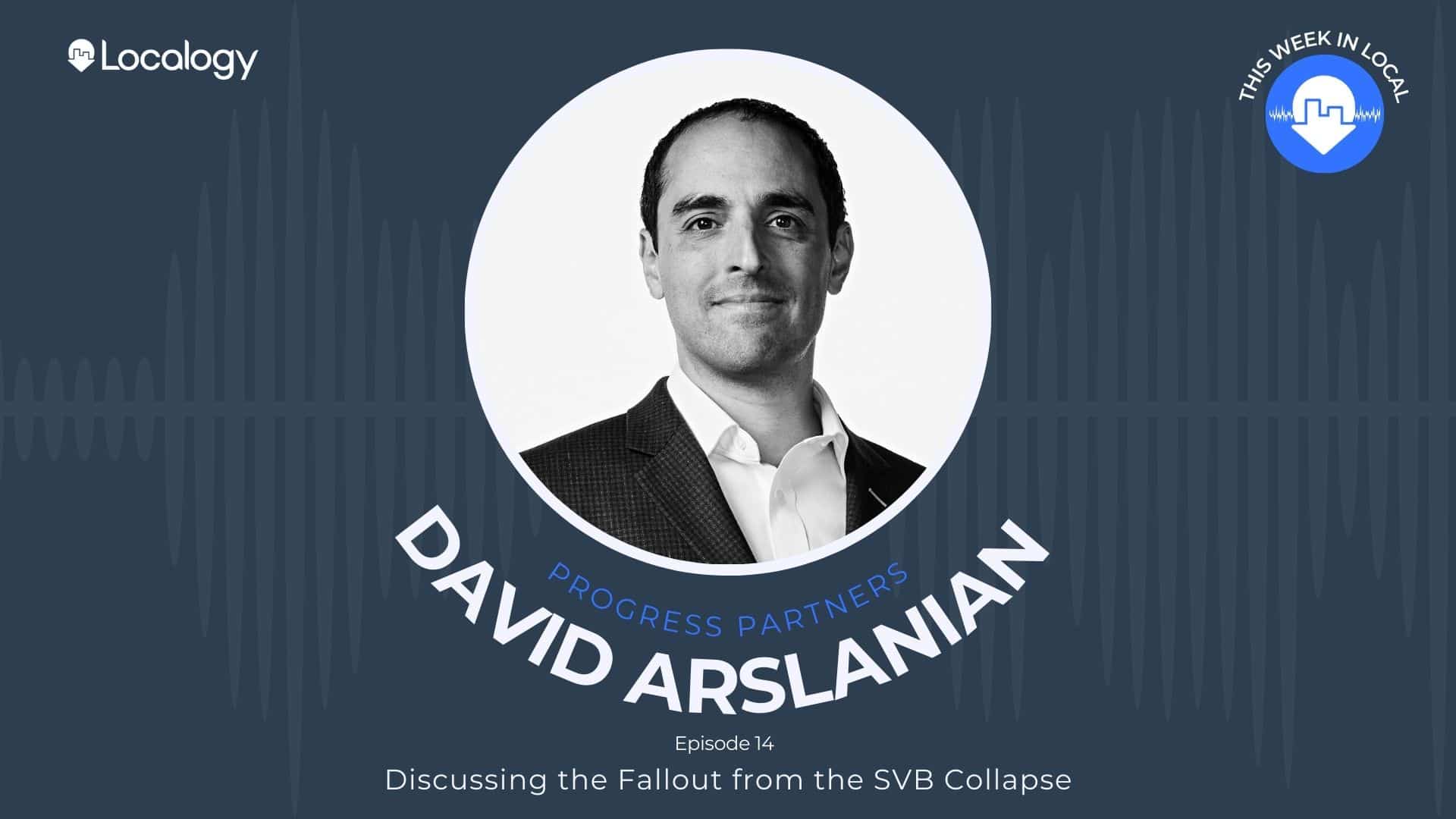The collapse of Silicon Valley Bank seems to be all that anyone can talk about in the tech, media, and finance worlds. And as we teased late last week, we recorded the latest episode of This Week in Local on this very topic. That episode is now live and you can listen through the below links and embeds.
But to differentiate from the SVB chorus of narratives that permeates the interweb and broadcast media, we narrowed our discussion to the impact of SBV’s fallout on Localogy’s world of media and advertising. What do the companies and individuals in these worlds have to know, brace for, and learn from?
To tackle these questions, we sat down with Progress Partners’ Managing Director David Arslanian. If his name sounds familiar, he was our guest on a video roundtable, to discuss the then-hot trend of SPACs. And he’s on the speaking roster at the upcoming L23, to discuss the current venture investing climate.
As for the takeaways from our podcast discussion, Arslanian sees SVB as a cautionary tale to banks and anyone else managing capital. It’s all about risk adjustment in a constantly changing environment. Though “it’s complicated,” this failure to adjust is at the heart of SVBs downfall.. at a high level at least.
Something Amiss
Going deeper, Arslanian explains that there were a unique set of circumstances that led to this point. Among them, a Covid venture boom inflected the amount of cash that startups were holding. Many parked those dollars at SVB, as it has become an elite and trusted institution to do so.
That torrent of incoming deposits – though it’s normally a good thing for any bank – caused its balance of borrowing to lending to be upside down. It had an abundance of deposits but fewer places to invest it. So it began to put that money in play wherever it could, including low-interest U.S. Treasuries.
That position then became diminished when interest rates rose. The value of those funds cratered, causing SVB to scramble to course correct. When it began to sell those positions at a loss, with the intention of finding more optimal investment vehicles, It lost billions… causing it to scramble further.
Once it got to the point of selling shares to further capitalize, it tipped the markets off to something amiss. Then it fumbled the investor relations piece and caused mass panic. That’s when the bank run was incited, the herd mentality took over – as it often goes in bank runs – and the rest was history.
Place Your Chips
Of course, there’s a lot more to it, but that’s the short version. And the lesson, as mentioned, is for better risk adjustment (not to mention communications strategies). As for the impact on the advertising and marketing worlds, we could see ad budgets retract on the demand side and other trends accelerate.
For example, if any economic retraction ensues on a broader scale, we could see a similar effect on ad markets that we often see in downturns. Ad budgets fall but also shift. CMOs are forced to rethink where they place their chips, which is often good for performance-based formats and bad for legacy media.
We saw the same thing happen in the wake of the dot-com boom when Google and search advertising rose from the recession’s ashes to transform the digital advertising landscape. In a similar way, social media marketing inflected after the financial crisis. It’s all about finding more ROI in the marketing mix.
So what emerging formats could benefit from the current retraction – and any acceleration caused by SVB’s collapse? Arslanian is big on retail media networks. These include things like Lowes’ One Roof network and other retail ad networks meant to monetize the ad inventory throughout their stores.
Physical Space
That gets back to the ROI and performance-based piece. There’s high buying intent whenever ads are inserted at lower-funnel stages of the consumer consideration cycle. And it doesn’t get much lower in the funnel than the signage and other media on retail aisle endcaps and other in-store displays.
But that all just scratches the surface. To listen to the full discussion with Arslanian, check out the episode in any of the embeds above and below. Also please subscribe, like, comment, and share on Apple Podcasts, Google Podcasts, Spotify, or wherever you get your podcasts.
Meanwhile, we’ll see you next week on This Week in Local, and next month at L23 where Arslanian will bring these and more insights to the stage.





